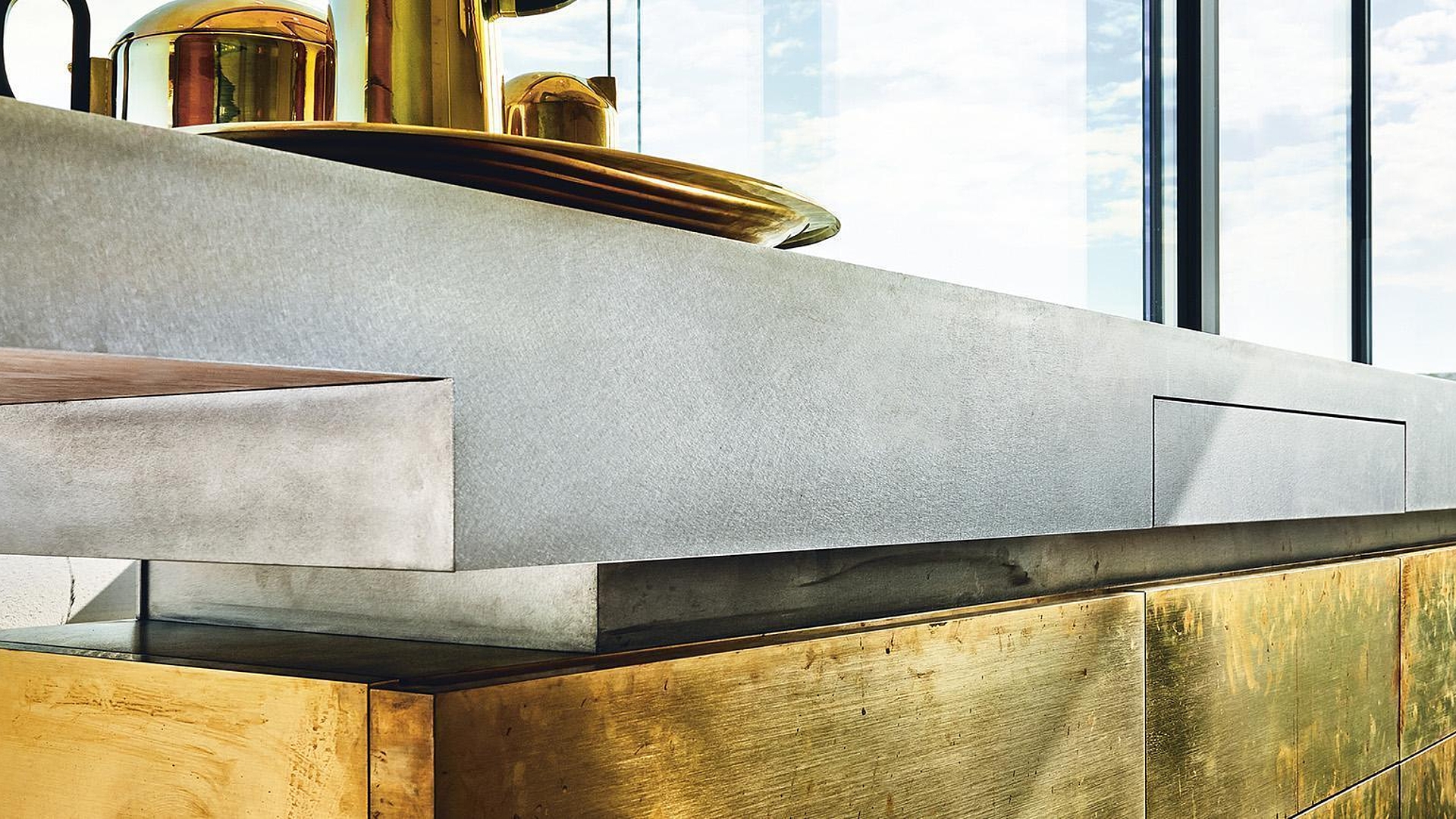
THE KITCHEN IS A CULT ITEM AND THE NEW STATUS SYMBOL
From interior design journalist Barbara Friedrich
THE KITCHEN IS A CULT ITEM
The kitchen is the new car. This has been noted in German business magazine Wirtschafts-Woche and observed by trendsetters and home living magazines. And the German kitchen industry is delighted about it. It is recording a 30% growth rate, primarily in the premium quality furnishings segment.
Whereas the ultra-wealthy used to fill their garage with an opulent car with a five to six-figure worth (or display it on the driveway for all the neighbours to see), they today spend 100,000 euros and more on their kitchen, without even flinching. After all, it is quite some time now since this replaced the car as a status symbol. A thoroughly pleasing development. After all, you spend hours in your car stuck in traffic jams. Lost time, stress, frustration. The environment gets damaged too. Domestic kitchens, on the other hand, promise relaxation while cooking and eating; a cosy setting to enjoy with family and friends.
That said, some kitchens nowadays look more like a control centre from the Starship Enterprise than a relaxing oasis: cool, space-age-like, futuristic and packed with smart-home technology. At Living Kitchen during the IMM Cologne furniture trade fair at the start of the year, visitors were able to see all the latest kitchen industry trends and tendencies: gold-coloured, rust-effect and mock concrete unit fronts; solid, raw granite and sturdy timber planks; ultra-smooth, high-gloss lacquered surfaces in ecru and snow white, highly resistant to fingerprints; stainless steel and aluminium like in professional kitchens; rare and expensive, eye-catching veneers; and, of course, high-tech appliances that practically think and cook of their own accord. There really are some ultra-expensive, ultra-chic kitchens that the whole house is often planned around. Or at least the winter garden. Kitchens like this need the proper space and framework – the right architecture.
The kitchen’s rise to a luxury commodity and status symbol began in the final decades of the last century. As people became more prosperous, a hedonistic gourmet society developed. Premium food and drink became a way of life. People followed the Michelin Guide to trendy Michelin-star restaurants – and became food and wine connoisseurs. Inspired by the refined dishes of celebrated chefs, amateur cooks also started to experiment with unusual recipes and ingredients in the comfort of their own homes. The kitchen became a workshop. The willingness to invest huge amounts in the creation of these kitchen laboratories grew. Gradually, the men of the house discovered cooking as a much-loved pastime and began to value the perfect kitchen. Money was therefore invested and people treated themselves. The irony of the story: it was actually a woman, namely the Viennese architect Margarete Schütte-Lihotzky, who developed the rational and functional ‘Frankfurt kitchen’ in 1926 – as a way to make life easier for (and she was quite clear in this) housewives! Rather than having to work in previously large, disorganised domestic kitchens, the idea was that they could now do so in a
compact space with functional built-in elements arranged in a U-shape. This was visually and olfactorily shielded from the actual living areas. The basic idea behind this design was the (male) principle of industrial mass production: the optimisation of production processes.
Then, of all people, it was a man who released the wives and mothers who had been locked away in the kitchen: the Swabian designer Otl Aicher. His book ‘Die Küche zum Kochen. Werkstatt einer neuen Lebenskultur’ (‘The kitchen as a place for cooking. The workshop of a new lifestyle culture’) was published in the 1980s based on research into the historical development of kitchens and cooking. In this, he makes very practical suggestions about the design of the ‘right’ kitchen – from the stove to the dining table and the appliances. Actually a graphic designer whose works included the graphic design for the Olympic Games in 1972, Otl Aicher’s idea essentially made him the founding father of modern
kitchen design, which led to the current trend of the ‘living kitchen’. Of course, we doubt that Aicher would have envisaged golden unit fronts. Aicher would have probably shaken his head at the way kitchens look today. The kitchen island as a sculpture, quasi an altar, as described by theologist and folklorist Christoph Kürzeder in an episode of the Bavarian TV show ‘Capriccio’? The kitchen as a sacred place? As a place of worship and sacrifice? Back to the archaic roots? We just hope that people will actually cook in these stylish kitchens once the photographer has left. Or that they have a ‘kitchenette’ in the cellar.
INFOS
Barbara Friedrich, chief editor and most recently publisher of A&W Architektur&Wohnen magazine (1999 to 2016), has 30 years’ experience in the (interior) design sector. She is an author, presenter and member of many design panels.
Photography: Holzrausch/Sebastian Arlt, Holzrausch/Koy+Winkel Fotografie
Photograpy B. Friedrich: Giovanni Castel